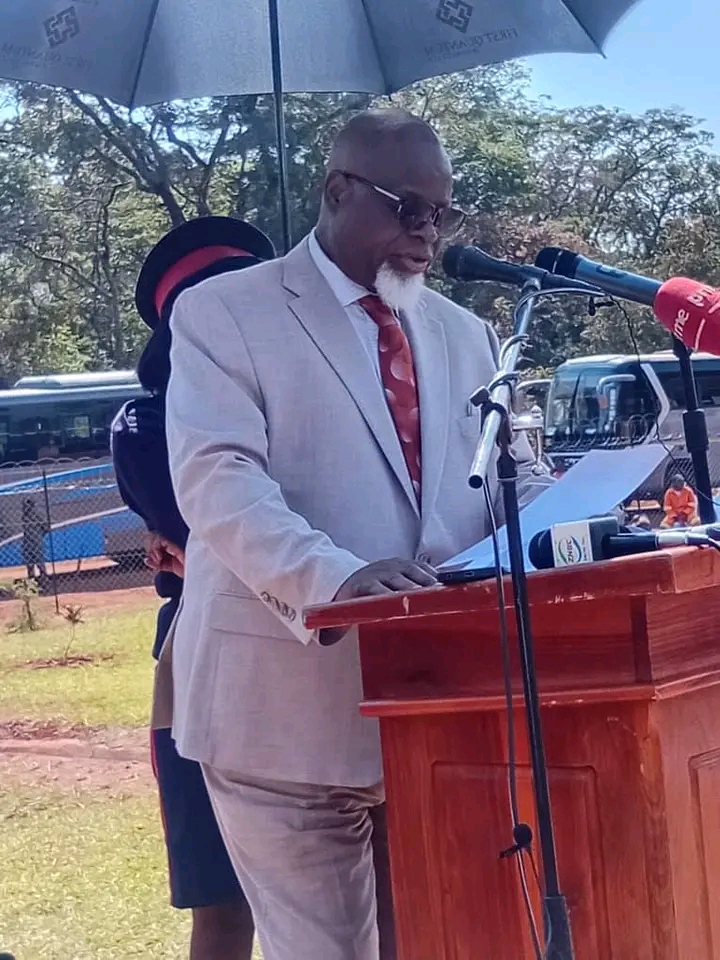By Derrick Silimina
The Bank of Zambia says inflationary pressures have persisted since the last Monetary Policy Committee meeting held in August and rose to an average of 11 percent in the third quarter from 9.9 percent in the second quarter of 2023.
Speaking during the Monetary Policy Committee (MPC) Meeting held at the Central Bank on Wednesday in Lusaka, BOZ Governor Denny Kalyalya noted that in October, inflation increased to 12.6 percent from 12.0 percent in September.
Dr. Kalyalya stressed that in the third quarter, the Kwacha depreciated by 5.8 percent against the US dollar and the pressure has persisted in the fourth quarter adding that between end-September and November 21, 2023, the Kwacha depreciated by 10.9 percent to K23.30 per US dollar.
“In view of the above, the Monetary Policy Committee decided to raise the Monetary Policy Rate by 100 basis points to 11.0 percent. If left unchecked, inflation could become anchored above the target band, thereby making it harder to achieve macroeconomic stability.
Therefore, in this environment, a much stronger policy response is warranted to anchor inflation expectations and bring inflation back into the 6-8 percent target band,” Dr Kalyalya said.
He cited the increase in retail fuel prices, high international crude oil prices and a weaker exchange rate as being the major drivers of these inflationary pressures adding that constrained supply due to adverse weather conditions (climate change) amid high regional demand largely explain the sustained rise in maize grain prices.
The Governor highlighted that with sustained excess demand for foreign exchange, mostly by the energy and manufacturing sectors, amid low supply, especially from the mining sector, and the strengthening of the US dollar on the international market have been the key factors explaining the observed depreciation of the Kwacha against major currencies.
He stated that to moderate volatility and help meet critical import requirements, the Bank had to sell a large proportion of the foreign exchange from mining taxes paid directly into the Bank in US dollars.
“In the third quarter, US$173.0 million was sold against the US$256.4 million received as mining taxes. In addition to these sales of foreign exchange to the market, on November 13, 2023, the Bank increased the statutory reserve ratio by 300 basis points to 14.5 percent.
Noting the persistence of pressures in the foreign exchange market, on November 21, 2023, the statutory reserve ratio was adjusted by a further 250 basis points to 17.0 percent, effective November 27, 2023,” he noted.
Dr. Kalyalya explained that in spite of the referred to pressures, the sales to the market, and debt service, there was a modest build up in gross international reserves in line with the ECF arrangement and in this regard, reserves increased to US$2.9 billion (equivalent to 3.2 months of import cover) at end-September from US$2.7 billion (2.9 months of import cover) at end-June.
He underscored that this was made possible by the second disbursement under the IMF Extended Credit Facility, project inflows, mining tax receipts, and some market purchases.
“Current global economic developments have also had adverse effects on domestic inflation. Global growth has remained subdued and inflation in most advanced economies is above target despite some moderation. Elevated inflation has prompted most central banks in advanced economies to continue raising interest rates. The ensuing tighter financial conditions, coupled with weaker growth prospects, have been exerting depreciation pressures on currencies in frontier and emerging economies, including in Zambia. Weaker global growth is also dampening demand for and price of copper, thus contributing to the current low supply of foreign exchange on the domestic market,” he added.
Dr. Kalyalya pointed out that inflationary pressures are expected to intensify over the forecast horizon covering the fourth quarter of 2023 to the third quarter of 2025 as it is projected to average 10.9 percent, 11.4 percent, and 9.6 percent in 2023, 2024, and 2025, respectively, compared to 10.2 percent in 2023 and 9.3 percent in both 2024 and 2025 reported at the August MPC Meeting.
He said the effects of tightening global financial conditions, working through the exchange rate and expectations channels, as well as elevated food and fuel prices are expected to drive inflation during the forecast horizon and push it further away from the 6-8 percent target band.
“The build-up in geopolitical tensions, including the protracted Russia-Ukraine war and the recent Israel-Hamas war, further tightening in global financial conditions as inflation remains elevated, and weather-related shocks are the key upside risks to the inflation outlook.”
Dr. Kalyalya said in raising the Policy Rate, the Committee took note of the brighter growth prospects than projected in August and is of the view that growth will be sustained over the medium to long-term following an upward revision to real GDP growth for 2023 because of higher-than-expected growth mostly in the ICT, education, transport, and tourism sectors during the first nine months of the year.
He affirmed that the economy is now projected to grow faster at 4.3 percent in 2023 than the previous forecast of 2.7 percent.
“A further expansion of the economy by 4.7 percent in both 2024 and 2025 is projected, supported by the expected recovery in the mining and agriculture sectors. The Committee also took into account stability in the financial sector and sustained progress on fiscal consolidation in arriving at its decision. The positive spillovers from reaching a Staff-Level Agreement on the second review of the IMF Extended Credit Facility on November 20, 2023, and progress on external debt restructuring are essential for macroeconomic stability,” Dr. Kalyalya stated.








